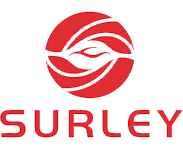In modern manufacturing, coating is a critical process that imparts aesthetic appeal and corrosion/weather resistance to products. The level of automation in this process is crucial. Selecting the right automated coating production line is not simply about purchasing a few robots; it requires a comprehensive decision-making process covering demand analysis, technology selection, economic evaluation, and long-term planning. Incorrect choices can lead not only to huge investment losses but also to bottlenecks in capacity, quality, and flexibility.
I. Core Premise: Accurately Define Your Needs and Constraints
Before selecting any equipment, a thorough internal “self-assessment” is necessary to clarify the basic requirements.
Product Matrix Analysis (What are we coating):
Material and geometry: Are the products metal, plastic, or composite? Are they simple flat panels or complex 3D workpieces with deep cavities and seams? This directly determines the difficulty of the coating process and the flexibility required of the equipment.
Size and weight range: The dimensions and weight of the workpieces determine the effective travel, load capacity, and working range of conveyors and spraying equipment.
Production volume and takt time (How much to coat? How fast):
Annual/daily output: This is the key factor determining the production line scale and whether a batch or continuous process is suitable.
Production takt: The number of products to be completed per unit time directly affects the motion speed and efficiency required of robots or automatic spraying machines.
Quality and process standards (What should it look like):
Film thickness: Uniformity and target thickness range. High-precision requirements necessitate equipment with high repeatability.
Appearance: Are we aiming for a premium A-grade surface (e.g., automotive panels) or primarily protective coatings? This affects the reliance on manual touch-ups and trajectory precision of equipment.
Coating type and transfer efficiency: Whether using solvent-based, water-based, powder, or UV coatings, the characteristics of the coating (viscosity, conductivity, curing method) impose specific requirements on supply and exhaust systems, atomizers, and environmental control. Improving transfer efficiency is key for cost reduction and environmental protection.
Environmental and resource constraints (Under what conditions will we coat):
Workshop conditions: Existing space, ceiling height, load-bearing capacity, and ventilation.
Energy and environmental regulations: Local VOC emission standards, waste paint, and wastewater treatment requirements affect the choice of exhaust treatment equipment.
Budget: Initial investment and expected ROI require balancing automation level and cost.
II. Core Equipment Selection: Building the Skeleton of an Automated Coating System
Once requirements are clear, the next step is technical selection of specific equipment.
(A) Conveyor Systems — The “Arteries” of the Production Line
The conveyor system determines workpiece flow and production rhythm; it forms the foundation of automation.
Intermittent conveyor systems:
Floor conveyors / friction lines: Suitable for large, heavy workpieces (e.g., construction machinery, large cabinets). Workpieces remain stationary at spray stations, facilitating multi-angle spraying with high flexibility.
Selection basis: High product variety, complex processes, high coating quality requirements, and low priority on high-speed takt.
Continuous conveyor systems:
Hanging chains / accumulation chains: Classic approach for stable takt and high-volume production; workpieces move during spraying, requiring precise robot trajectory control.
Skid conveyor systems: High precision and smooth operation, widely used in automotive and home appliance industries; can integrate lifting and rotating mechanisms for fine coating.
Selection basis: Standardized products, large volumes, pursuit of high takt time and continuous production.
(B) Spraying Execution Units — The “Skilled Hands” of the Production Line
This is the core of automation technology, directly determining coating quality and efficiency.
Spray robots vs. dedicated automatic spray machines:
Spray robots (6-axis/7-axis):
Advantages: High flexibility. Can handle complex trajectories via programming. Integration with vision systems enables offline programming and positioning compensation, reducing manual teaching time.
Suitable for: Multiple product types, frequent updates, complex geometries, and stringent consistency requirements, such as in automotive, aerospace, bathroom fixtures, and furniture.
Dedicated automatic spray machines (reciprocators / top-spray / side-spray):
Advantages: Lower cost, simple programming, easy maintenance, stable takt.
Disadvantages: Low flexibility; can only follow fixed trajectories; changing products requires significant mechanical adjustment.
Suitable for: Regular-shaped products (flat, cylindrical), high-volume, low-variety production, such as wood panels, metal sheets, and profiles.
Atomizer selection (rotary cup / spray gun):
High-speed rotary cup: High transfer efficiency, good film quality, high gloss and color fidelity, ideal for topcoat; usually paired with high-voltage electrostatics.
Air spray gun: Gentle atomization, good coverage for cavities and corners; used for primer, color coats, or electrostatically sensitive parts (like plastics).
Mixing spray gun: Balances efficiency and atomization, lower energy consumption than air guns.
Selection strategy: Typically, “rotary cup as primary, spray gun as supplementary.” The robot main arm carries the rotary cup for large surfaces, plus one or more micro spray guns (or dual-component atomizers) for door frames, gaps, and corners.
(C) Paint Supply and Exhaust Systems — The “Circulatory System” of the Line
Paint supply system:
Pressure tank vs. pump supply: For multi-color, multi-station systems, centralized pump supply (gear or diaphragm pumps) with color-change valves enables fast, accurate automatic color switching, minimizing paint loss and solvent consumption.
Exhaust and paint mist treatment:
Dry mist treatment (Venturi / lime powder): Water-free, no wastewater, simpler maintenance; modern trend.
Wet mist treatment (water curtain / water cyclone): Traditional, stable efficiency, but produces wastewater.
Selection basis: Balance environmental regulations, operating cost, maintenance convenience, and coating type.
III. Decision Balance: Finding the Right Trade-offs
During selection, trade-offs must be made across key dimensions:
Flexibility vs. specialization:
High-flexibility line: Robot-centric, suitable for small-batch, multi-product production; high initial investment but adaptable long-term.
Specialized line: Dedicated machine-centric, suitable for large-batch, low-variety production; efficient and low-cost, but hard to adapt.
Balance strategy: Hybrid “robot + modular dedicated machines” to ensure efficiency for mainstream products while retaining adaptability for new products.
Automation level vs. ROI:
Automation is ideal, but ROI must be calculated. Not every station warrants automation; e.g., extremely complex, hard-to-grip workpieces or minor touch-up areas may be more economical manually.
ROI calculations should include: paint savings (higher transfer efficiency), labor cost reduction, improved consistency (lower rework), and increased capacity revenue.
Technological foresight vs. maturity:
Choose mature, market-proven technology and reliable brands for stable production.
Also ensure some foresight, e.g., IOT-ready interfaces for future data collection, predictive maintenance, and digital twin implementation.
IV. Implementation and Evaluation: Turning the Blueprint into Reality
Supplier selection and solution evaluation:
Choose integrators or equipment suppliers with rich industry experience and strong technical support.
Require detailed 3D layout and takt simulations to verify line feasibility and efficiency virtually.
Conduct on-site visits to completed projects to assess actual performance and after-sales service.
Trial coating and acceptance:
Conduct trial runs with standard workpieces before shipping and after on-site installation.
Strictly follow technical agreements for acceptance; key indicators include: film thickness uniformity (Cpk), transfer efficiency, color change time and paint consumption, takt time, and overall equipment efficiency (OEE).
Conclusion
Selecting suitable automated coating equipment is a precise balance between technology, economics, and strategy. Decision-makers must not only be procurement experts but also deeply understand their products, processes, and market strategies.
The right equipment is not necessarily the most expensive or technologically advanced; it is the system that accurately matches current production needs, offers flexibility for future development, and delivers substantial value over its lifecycle. Successful selection transforms a coating production line from a cost center into a core driver of enterprise quality, efficiency, and brand upgrading.
Post time: Nov-17-2025









